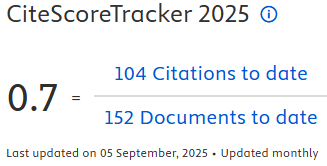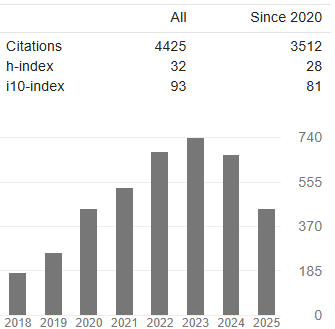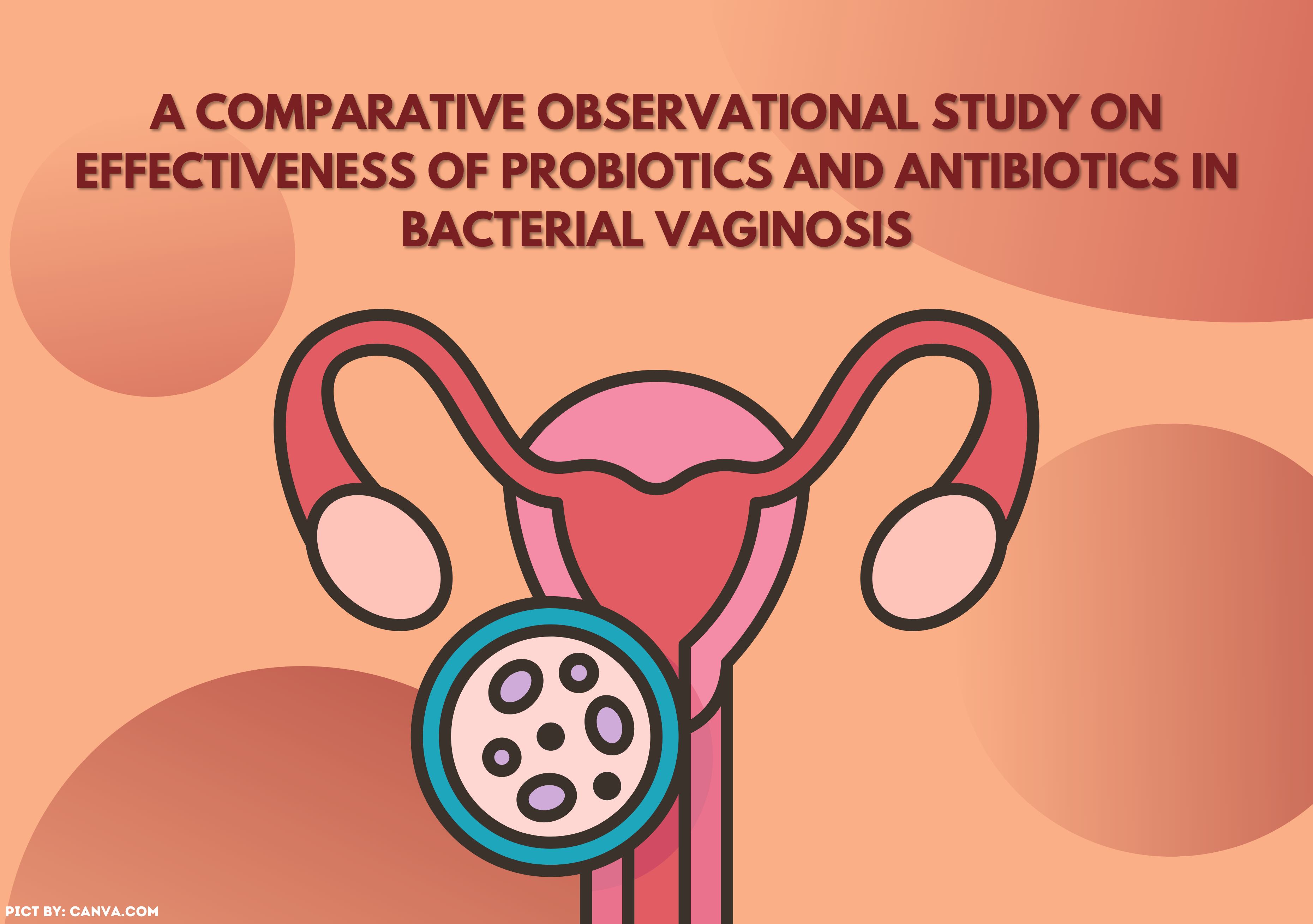THE EFFECT OF EDUCATIONAL INTERVENTION BASED ON TRANSTHEORETICAL MODEL FOR A LOW-SALT DIET AMONG HYPERTENSION PATIENTS: A LITERATURE REVIEW

Introduction: This literature review aimed to describe the educational intervention for a low salt diet based on a trans-theoretical model in hypertensive patients. Methods: This study was a literature review from several databases such as PubMed, Science Direct, Cochrane library, Ebsco, and ProQuest. This study intended to examine studies related to the application of TTM in educating low salt diets in hypertensive patients published in English in the last 5 years. Data were analyzed by summarizing and categorizing studies and interventions. To assess the quality of the articles reviewed, a critical appraisal was assessed using the CASP Randomized Controlled Trial Checklist and the Joanna Briggs Institute Critical Appraisal Checklist for Quasi-Experimental Studies. Result: Five articles were identified and included in the review. A literature review reveals that TTM-based education can change the behavior of hypertensive patients on a low salt diet. Changes in the behavior of a low-salt diet have an impact on clinical changes such as decreased salt excretion in the urine, decreased weight and waist circumference, decreased blood pressure, and the risk of cardiovascular disease. Conclusion: TTM can be used to change the behavior of a low salt diet in hypertensive patients which has an impact on changing biochemical indicators of hypertensive patients.
Arafat, Y., Mohamed Ibrahim, M. I., & Awaisu, A. (2016). Using the transtheoretical model to enhance self-management activities in patients with type 2 diabetes: a systematic review. Journal of Pharmaceutical Health Services Research, 7(3), 149–156. https://doi.org/10.1111/jphs.12138
Bai, G., Zhang, J., Zhao, C., Wang, Y., Qi, Y., & Zhang, B. (2017). Adherence to a healthy lifestyle and a DASH-style diet and risk of hypertension in Chinese individuals. Hypertension Research, 40(2), 196–202. https://doi.org/10.1038/hr.2016.119
Forouzanfar, M., Liu, P., Roth, G., Ng, M., Biryukov, S., & Marczak, L. (2017). Global burden of hypertension and systolic blood pressure of at least 110 to 115 mm Hg, 1990–2015. Jama, 317(2), 165–182. https://doi.org/10.1001/jama.2016.19043
Friedberg, J. P., Rodriguez, M. A., Watsula, M. E., Lin, I., Wylie-Rosett, J., Allegrante, J. P., Lipsitz, S. R., & Natarajan, S. (2015). Effectiveness of a tailored behavioral intervention to improve hypertension control: Primary outcomes of a randomized controlled trial. Hypertension, 65(2), 440–446. https://doi.org/10.1161/HYPERTENSIONAHA.114.03483
He, F. J., Li, J., & Macgregor, G. A. (2013). Effect of longer-term modest salt reduction on blood pressure. Cochrane Database of Systematic Reviews, 2013(4). https://doi.org/10.1002/14651858.CD004937.pub2
Irwan, A. M., Kato, M., Kitaoka, K., Ueno, E., Tsujiguchi, H., & Shogenji, M. (2016). Development of the salt-reduction and efficacy-maintenance program in Indonesia. Nursing and Health Sciences, 18(4), 519–532. https://doi.org/10.1111/nhs.12305
JNC. (2003). The Seventh Report of the Joint National Committe on Prevention, Detection, Evaluation, and Treatment of High Blood Pressure.
Karupaiah, T., Wong, K., Chinna, K., Arasu, K., & Chee, W. S. S. (2015). Metering Self-Reported Adherence to Clinical Outcomes in Malaysian Patients With Hypertension: Applying the Stages of Change Model to Healthful Behaviors in the CORFIS Study. Health Education and Behavior, 42(3), 339–351. https://doi.org/10.1177/1090198114558588
Kawamura, A., Inagaki, J., Umemoto, S., Kajiya, K., Kishi, H., Mitarai, M., Oda, H., & Kobayashi, S. (2019). Dietary Adherence, Self-Efficacy, and Health Behavior Change of WASHOKU-modified DASH Diet: A Sub-analysis of the DASH-JUMP Study. Current Hypertension Reviews, 15, 1–10. https://doi.org/10.2174/1573402115666190318125006
Laatikainen, T., Nissinen, A., Kastarinen, M., Jula, A., & Tuomilehto, J. (2016). Blood Pressure, Sodium Intake, and Hypertension Control: Lessons From the North Karelia Project. Global Heart, 11(2), 191–199. https://doi.org/10.1016/j.gheart.2016.04.011
Lee, J. T., Tsai, J. L., Tsou, T. S., & Chen, M. C. (2011). Effectiveness of a theory-based postpartum sexual health education program on women's contraceptive use: A randomized controlled trial. Contraception, 84(1), 48–56. https://doi.org/10.1016/j.contraception.2010.11.008
Libuda, L., Kersting, M., & Alexy, U. (2011). Consumption of dietary salt measured by urinary sodium excretion and its association with body weight status in healthy children and adolescents. Public Health Nutrition, 15(3), 433–441. https://doi.org/10.1017/S1368980011002138
Lin, S. P., & Wang, M. J. (2013). Applying the transtheoretical model to investigate behavioural change in type 2 diabetic patients. Health Education Journal, 72(2), 189–202. https://doi.org/10.1177/0017896912437495
Liu, S., Tanaka, R., Barr, S., & Nolan, R. P. (2019). Effects of self-guided e-counseling on health behaviors and blood pressure: Results of a randomized trial. Patient Education and Counseling. https://doi.org/10.1016/j.pec.2019.10.007
Mills, K., Bundy, J., Kelly, T., Reed, J., Kearney, P., & Reynolds, K. (2016). Global Disparities of Hypertension Prevalence and Control Clinical Perspective: A Systematic Analysis of Population-Based Studies From 90 Countries. Circulation, 134(6), 441–450. https://doi.org/10.1161/CIRCULATIONAHA.115. 018912
Mulyati, L., Yeti, K., & Sukamrini, L. (2013). Analysis of Factors Effecting Self-Management Behaviour among Patients with Hypertension. Jurnal Keperawatan Padjadjaran, v1(n2), 112–123. https://doi.org/10.24198/jkp.v1n2.7
Ortega, R. M., López-Sobaler, A. M., Ballesteros, J. M., Pérez-Farinós, N., Rodríguez-Rodríguez, E., Aparicio, A., Perea, J. M., & Andrés, P. (2011). Estimation of salt intake by 24h urinary sodium excretion in a representative sample of Spanish adults. British Journal of Nutrition, 105(5), 787–794. https://doi.org/10.1017/S000711451000423X
Plow, M. A., Finlayson, M., & Cho, C. (2011). Correlates of stages ofchange for physical activity in adults with multiple sclerosis. Research in Nursing and Health, 34(5), 378–388.
Prochaska, J. O., Johnson, S., & Lee, P. (2009). The transtheoretical model of behavior change. (3rd ed.). Springer.
Prochaska JO. (2013). Transtheoretical Model of Behavior Change. In: Gellman MD, Turner JR (Encycloped). Springer NY.
Rahajeng, E., & Tuminah, S. (2009). Prevalensi Hipertensi dan Determinannya di Indonesia. Majalah Kedokteran Indonesia, 59(12), 580–587.
Ratchford, S. M., Broxterman, R. M., Salle, D. T. La, Kwon, O. S., Hopkins, P. N., Richardson, R. S., & Trinity, J. D. (2019). Salt restriction lowers blood pressure at rest and during exercise without altering peripheral hemodynamics in hypertensive individuals 3. Am J Physiol Heart Circ Physiol, 317(6), 1194–1202.
https://doi.org/10.1152/ajpheart.00431.2019
Stolarz-Skrzypek, K., Kuznetsova, T., Thijs, L., Tikhonoff, V., Seidlerová, J., Richart, T., Jin, Y., Olszanecka, A., Malyutina, S., Casiglia, E., Filipovskí½, J., Kawecka-Jaszcz, K., Nikitin, Y., & Staessen, J. A. (2011). Fatal and nonfatal outcomes, incidence of hypertension, and blood pressure changes in relation to urinary sodium excretion. JAMA - Journal of the American Medical Association, 305(17), 1777–1785. https://doi.org/10.1001/jama.2011.574
The Joanna Briggs Institute. (2017). JBI_Quasi-Experimental_Appraisal_Tool2017.
Warren-Findlow, J., & Seymour, R. B. (2011). Prevalence rates of hypertension self-care activities among African Americans. Journal of the National Medical Association, 103(6), 503–512. https://doi.org/10.1016/S0027-9684(15)30365-5
Weber, M., Schiffrin, E., White, W., Mann, S., Lindholm, L., & Kenerson, J. (2014). Clinical practice guidelines
for the management of hypertension in the community: a statement by the American Society of Hypertension and the International Society of Hypertension. J Clin Hypertens (Greenwich), 16(1), 14–26. https://doi.org/10.1097/HJH.0000000000000065
Wen, S. L., Li, J., Wang, A. N., Lv, M. M., Li, H. Y., Lu, Y. F., & Zhang, J. P. (2019). Effects of transtheoretical model-based intervention on the self-management of patients with an ostomy: A randomised controlled trial. Journal of Clinical Nursing, 28(9–10), 1936–1951. https://doi.org/10.1111/jocn.14731
WHO. (2019). Hypertension. World Health Organization. https://www.who.int/news-room/fact-sheets/detail/hypertension
Yang, G., Zhou, X., Ji, W.-J., Liu, J.-X., Sun, J., Shi, R., Jiang, T., & Li, Y. (2018). Effects of Low Salt Diet on Isolated Systolic Hypertension: a Community-based Population Study. Journal of Hypertension, 36, e298. https://doi.org/10.1097/01.hjh.0000549216.39235.4e
Yasutake, K., Miyoshi, E., Misumi, Y., Kajiyama, T., Fukuda, T., Ishii, T., Moriguchi, R., Murata, Y., Ohe, K., Enjoji, M., & Tsuchihashi, T. (2018). Self-monitoring of urinary salt excretion as a method of salt-reduction education: A parallel, randomized trial involving two groups. Public Health Nutrition, 21(12), 2164–2173. https://doi.org/10.1017/S1368980018000095
Copyright (c) 2022 The Indonesian Journal of Public Health

This work is licensed under a Creative Commons Attribution-NonCommercial-ShareAlike 4.0 International License.
- The authors agree to transfer the transfer copyright of the article to The Indonesian Journal of Public Health effective if and when the paper is accepted for publication.
- Authors and other parties are bound to the Creative Commons Attribution-NonCommercial-ShareAlike 4.0 International License for the published articles, legal formal aspect of journal publication accessibility refers to Creative Commons Attribution-NonCommercial-ShareAlike 4.0 International License (CC BY-NC-SA), implies that:
- Attribution ” You must give appropriate credit, provide a link to the license, and indicate if changes were made. You may do so in any reasonable manner, but not in any way that suggests the licensor endorses you or your use.
- NonCommercial ” You may not use the material for commercial purposes.
- ShareAlike ” If you remix, transform, or build upon the material, you must distribute your contributions under the same license as the original.































